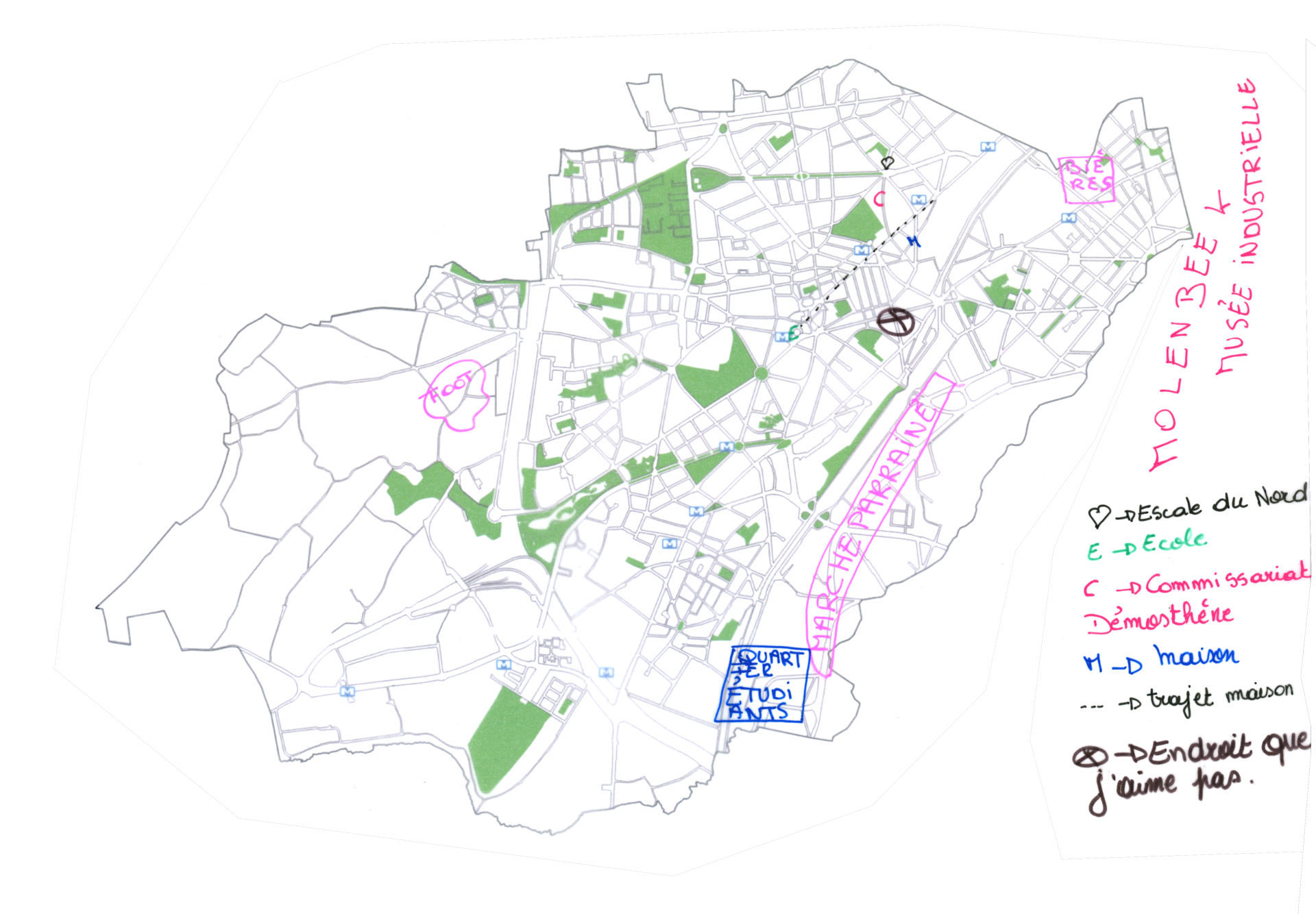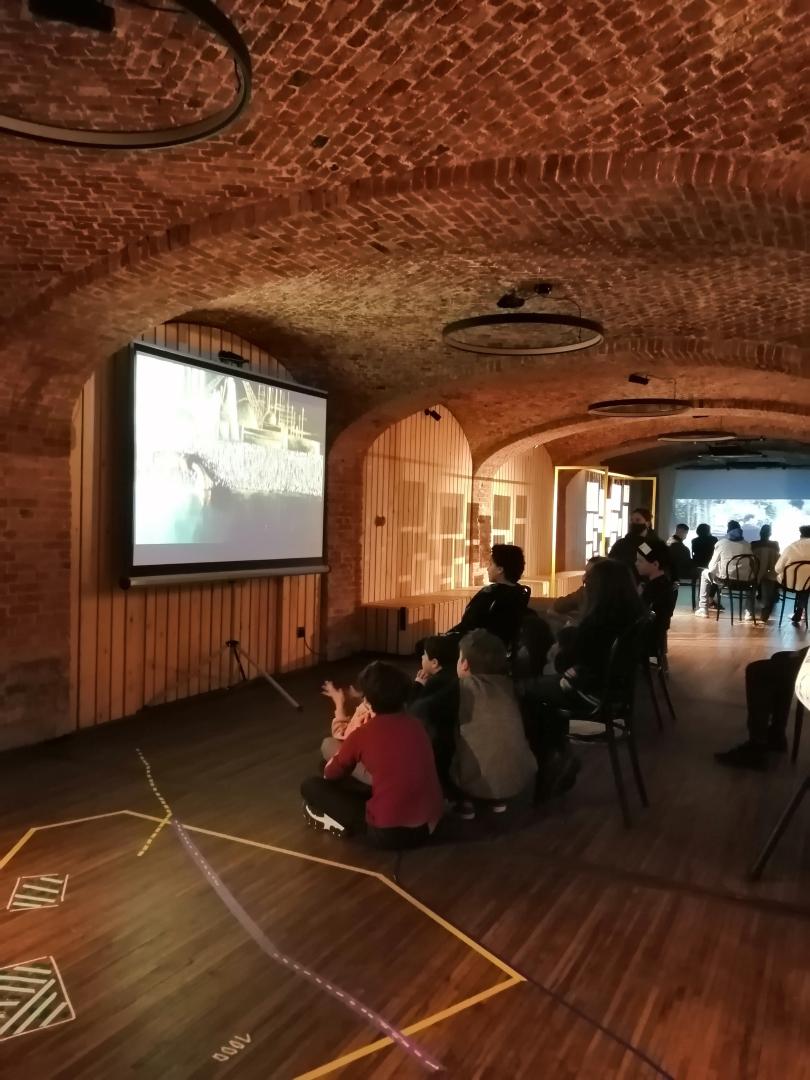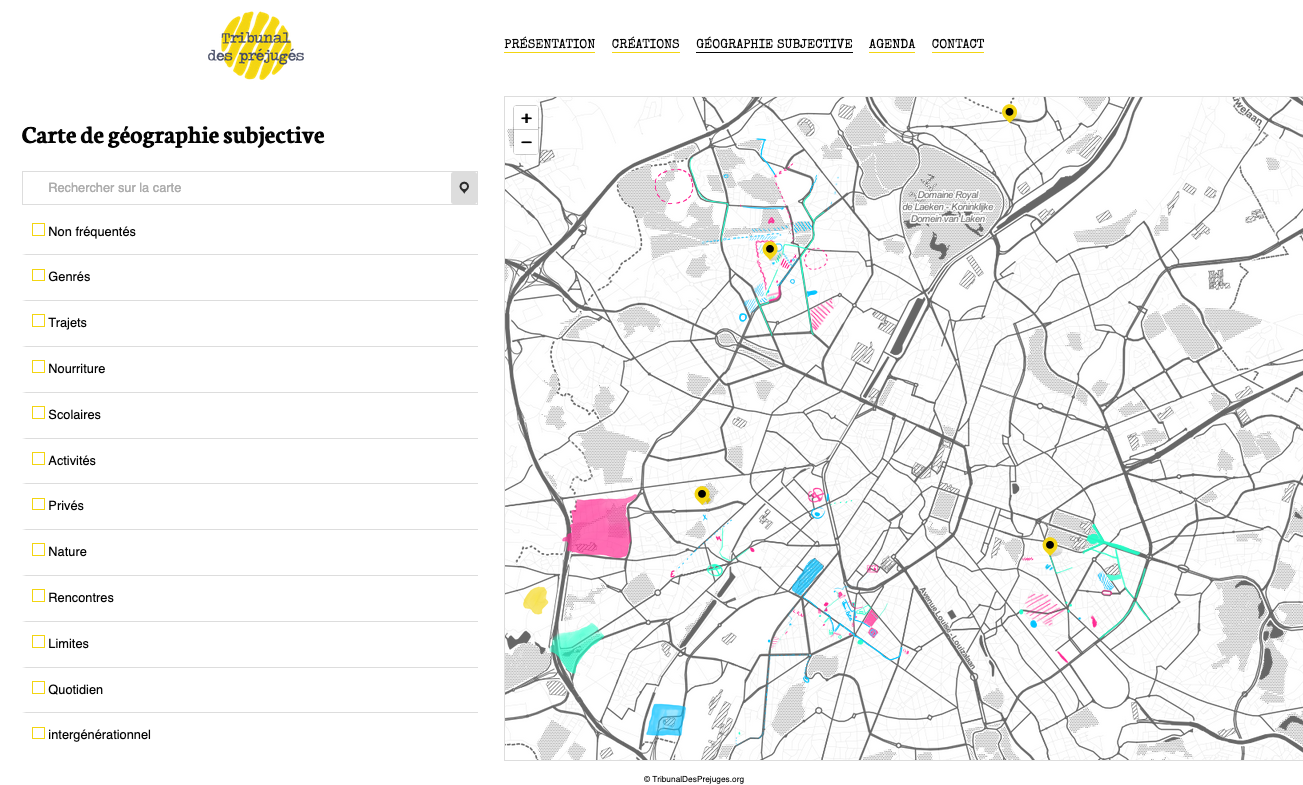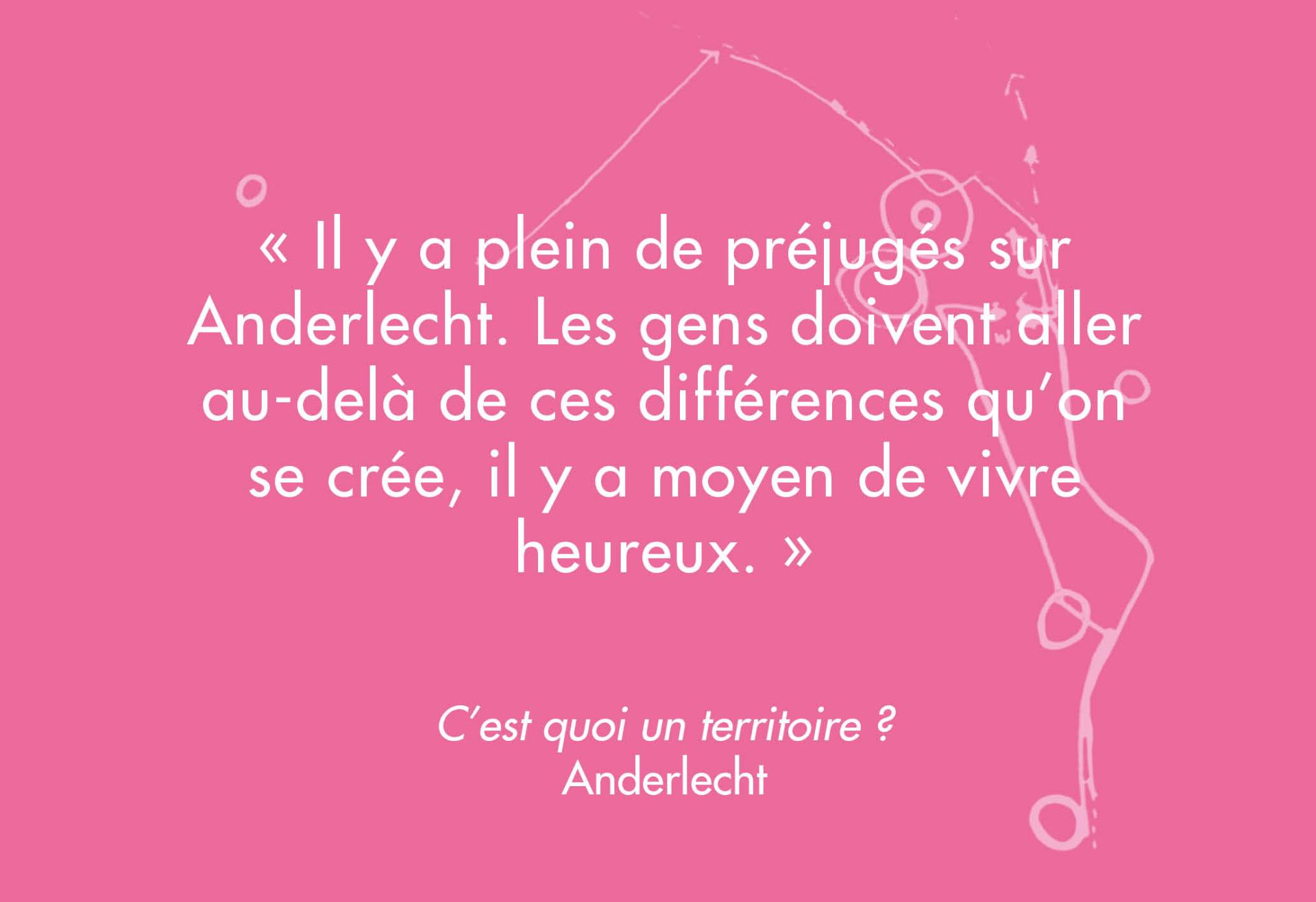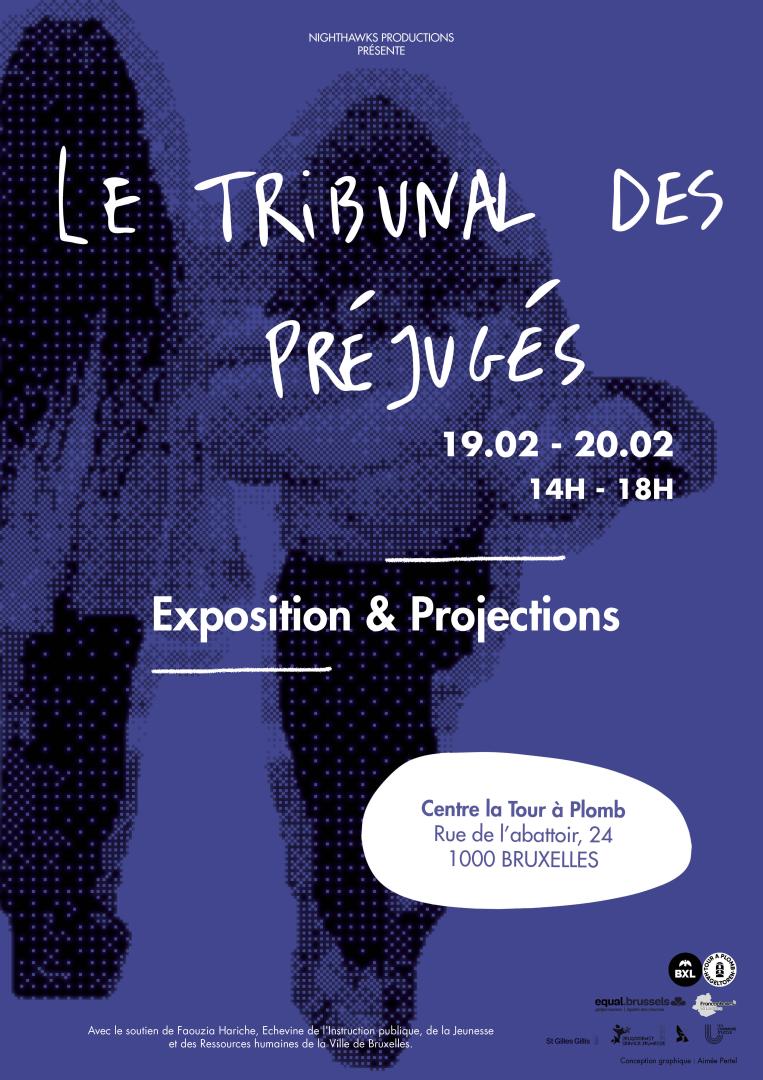Bias Court
Basic information
Project Title
Full project title
Category
Project Description
Bias Court is a community based participatory project where artists and Brussels’ residents meet, exchange and create together around the territory-related bias they have towards each other. In order to create a better understanding the other and to deconstruct the false ideas that prevent us from interacting with each other, we use social and artistic tools to create divers artistic products with the residents. In this sense we try to create more inclusive and sustainable urban communities.
Project Region
EU Programme or fund
Description of the project
Summary
Started in 2019, Bias Court is a project that emerged from the observation that Brussels resident do not circulate enough in their own City Region and that neighborhood identity often leads to segmenting communities rather than bringing them together. The reasons for that segmentation are numerous and can be found in the built environment, the historical transformations that the city underwent, the effects of bad political decisions, and many more. Nighthawks Productions is an organisation that always worked with artistic tools to bring together communities and to create spaces for people to exchange and debate around societal issues, such as urban fragmentation. We therefore decided to use the territory as a starting point in our project, in order to bring people together and find new ways to understand why people do not meet in Brussels, what kind of bias do they have against each other, how their identities are built, and how these affect their self representation, as well as their interaction with others. We then set up a series of partnership with local organisations and worked with their audiences to create together a series of artistic products, trying to shed a light on theses issues and help deconstruct the physical and mental barriers to a more inclusive and cohesive urban community. We worked with several artists and audiences from 10 municipalities of Brussels and created movies, pictures, photos, audio products revolving around what makes the identity of a place and what effects it has on the others.
We also mixed audiences and have them exchange and deconstruct directly the social construct and bias they have against each other, in order to finally create common art pieces. The idea was to always hear first what the people have to say, for the artist to be able to make a fitting proposition and start working together with the participants towards a common goal. These products are then put online on our platform and shared in the local communities
Key objectives for sustainability
The projet is based on a series of general and operational objectives, for which some of them are directly linked to issues of sustainability, whereas some others are more related to arts and culture. In order to be concise, only the appropriate objectives are mentioned here.
1) Deconstruct territory based bias
- Question how bias and territory interact (dialectic relation)
- Analyse territory as a subjective variable
- Deconstruct psychological and territorials frontiers
2) Think of cities are inclusive spaces/places
- Find new ways of interacting with public space
- Understand how identity is built and how it shapes human interaction in an urban context
- Contribute to deconstructing frontiers
3) Give value to urban dwellers' views and practices
- Provide a space for co-creation
- Broadcast and give value to the participants efforts'
- Show how singularity is key in understanding urban politics and urban based interactions
4) Promoting active citizenship
-Make participants the centre of the action
- Give value to their efforts by showing all the work (creation of a documentary based on the work of the participants)
5) Create more cohesive urban communities
- Undermine social, gender, intergenerational, and digital divides
- Create solidarity and links between urban residents, and between citizens and local institutions (especially cultural institutions)
6) Use artistic tools to bring people together
- Create bridges by using creation as a meaning.
All of these objectives have been met during the first phase of workshops, by bringing people together and co-creating the basis for a more inclusive and cohesive urban community, and by using the territory as a basis for that purpose.
Key objectives for aesthetics and quality
During the first phase of workshops, that took place from may 2019 to may 2021, we worked with participants on creating valuable art pieces such as : drawing, movies, video capsules, audio recordings. We used these various tools in order to be more flexible with the context of the workshop and the different audiences we worked with.
This ended up giving a large variety of final results, which are now being broadcasted to a broader audience, through the organisation of exhibitions, such as the one organsied in february 2021 (and are planning to organise more). We also try as much as possible to use public space as our stage by designing specific diffusion concepts that fit the urban reality of the places where the workshop took place. For instance the workshops that occurred in the municipality of Anderlecht are now being worked to be presented in the form of a digital trail (using tools as QR codes) to be followed in the whole municipality. We also worked on presenting the results in empty commercial spaces, using their empty commercial displays as ways to interact with the general audience.
We also worked on making the path to this creation visible and aesthetically pleasing by putting it all together on our online platform, for it to be visible by a broad audience. We worked with a graphic designer to rework the results of the first meetings and workshop in order to make them accessible, while still being faithful to the original work of the participants. All the results can be found on the online platform.
Finally, we think that asking for the participants to imagine their dreamed neighbourhood, municipality, or city spaces contribute to the creation of a more aesthetic urban environment by placing their voices in the centre the co-creation of future urban spaces.
Key objectives for inclusion
The inclusivity in this project can be found in diverse ways.
Firstly, the projects aims to built more inclusive and cohesive urban communities by highlighting the diverse voices of urban dwellers. In this sense, as it is highlighted in the general objectives of the project, we tried to contribute to the creation of a new shared urban imaginary, that could serve for thinking about the cities of tomorrow. This means that we needed the project to be inclusive in its essence, not only as far as participation is concerned but also as the general framework for the project to be built on.
Second, we aimed for the project to be inclusive in the sense that everybody can participate. We mainly worked with young people because we consider that their voice is of the uttermost importance since they are the one who will build the cities of the future. However, in our process we tried to make them meet and confront other type of audiences. We made them go outside and talk with other people and collect their point of views, in order to include these in their creative process.
Furthermore, we tried to include a variety of partner in the project, ranging from cultural centre, youth organisations, prevention based organisations, community organisations, organisations working with people with disabilities.
Finally, we put the emphasis on people meeting through the project, by mixing the various groups we worked with during activities and during the broadcasting efforts made for the project. Indeed, we created a group composed of various participants of the first phase of workshops and decided to go forward with them. In the same way, this group is now considered as the ambassadors of the project as they are invited to present their work in person each time there is a possibility for a public presentation/ exhibition.
Results in relation to category
We aimed for the project to be a transformative experience for the participants. Indeed, by broadening their horizons, by helping them understand how their identity is made and how it shapes their interaction with the other, by providing them with spaces where they could interact and exchange with the other people they share the urban spaces, we think that the project has had a positive impact on their thinking and their ways of interacting with others.
We also leaned towards creating more inclusive spaces and a place for discussing the tools to reach that goal.
We used arts and creation as a meaning to reach a more cohesive state for urban communities and for the participants to discover themselves and others in a new way.
Finally, by working on the creation of a shared conception of space that leaves place for discussions about the inclusiveness of urban space and the importance of social interaction we think that we contributed to shaping the future of urban communities and designed a new and powerful tool to work with urban dwellers towards understanding the issues related with urban fragmentation and the importance of being able to communicate and interact with others.
In this sense we think we contributed to highlight what gives some areas of Brussels a 'sense of place' and how this feeling can be understood and enhanced by working together towards the creation of inclusive urban spaces.
How Citizens benefit
First of all, the participants of the project all took part in it on a voluntary basis, making room for the workshops in their free time. We think it is important to highlight this here since the process of the workshop had to be designed specifically for each audience to allow them to participate in their own ways. In this way we think we provided a place for the participants to express themselves freely and participate without constraints to the project. They could therefore engage themselves freely in the project without having to focus on other aspects and this led to an experience that had them benefitting from it in various ways. Indeed, we realised that some of the participants used this project as a starting point to develop new activities (often related with the arts) and to start building new relationships with people they didn't expect to interact with before.
We therefore consider the project to have a positive impact on the participants by giving them the occasion to participate in such a common effort and by valuing their voices.
However, the positive impacts are not solely related to the effects it had on the participants. Indeed, by broadcasting the results of the workshops on our online platform and during public exhibitions taking place in the public space, we think that we contributed to showing other Brussels' residents how their city could be made more inclusive and understanding where the others come from, how they experience the city and how they think they could achieve to improve it shared space. We put the emphasis on creating participatory methods not only for the workshops but also for the broadcasting efforts, in order to have an active participation of all parties, audiences included.
Innovative character
The innovative character of the project lies in the use of social-artistic tools to work on territory based issues. To our knowledge this hasn't been made on such a large scale so far and it represents one of the key benefits of our project.
Indeed, working with artistic tools to tackle urban fragmentation related issues isn't new but we think that our methodology has proven to be useful in the sense that I could be used in any environment and with any audience. In this sense the project is all the more inclusive and can be replicated on many occasions, in order to further feed the discussion about social cohesion, inclusiveness of urban communities and urban spaces, and the creation of a shared identity based on feelings and co-creation rather than on bias and prejudices.
Furthermore, the idea of bringing together participants of all walks of life in a common project could be considered innovative since many of similar projects have been undertaken on a very local scale, or with a very limited and already cohesive audience.
Finally, it makes sense for us to include other people's or organisations' work in our project, in order to help them gain visibility and to give more content to our project. We therefore decided to make an open call to other organisations/individuals in order to host their creation on our website but also in order for them to be able to use our methodologies as much as they want.

